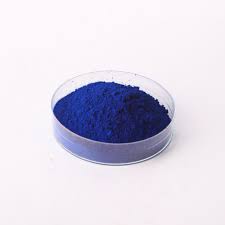japanese indigo dyeing
The Art and Tradition of Japanese Indigo Dyeing
Japanese indigo dyeing, known as aizome (藍染), is a craftsmanship steeped in history and artistry. This intricate process of dyeing textiles with indigo plants is not only a testament to Japan’s rich cultural heritage, but it also reflects the deep-rooted connection between nature and human creativity. With its stunning shades of blue and complex techniques, aizome has become a significant part of Japanese textiles and is celebrated internationally for its aesthetic value and sustainable practices.
The journey of Japanese indigo dyeing begins with the indigo plant, primarily from the species *Persicaria tinctoria*, which has been cultivated in Japan for over 1,000 years. Historically, indigo dye was a luxury product reserved for the samurai and the elite, though over time it became more accessible to the general populace. The cultivation and processing of indigo is labor-intensive, involving meticulous steps that begin with planting the seeds in the spring and harvesting the leaves in late summer.
The Art and Tradition of Japanese Indigo Dyeing
The dyeing process itself is an art form that requires skill and experience. The fabric, which is usually cotton or hemp, is repeatedly dipped into the indigo bath. Each dip gradually deepens the color, with the fabric emerging greenish-yellow and oxidizing to the characteristic deep blue once exposed to air. This layering technique allows artisans to achieve various tones and patterns, differentiating their work from others. Some common traditional dyeing patterns include shibori (tie-dyeing), where fabric is tied, stitched, or bound in various ways before being dyed, resulting in beautiful, intricate designs.
japanese indigo dyeing

One of the most appealing aspects of aizome is its eco-friendliness. Unlike synthetic dyes, indigo dyeing is rooted in natural processes and materials, promoting sustainability. The use of organic indigo plants reduces harmful chemicals and wastewater pollution associated with synthetic dyes, making this method a preferred choice for environmentally conscious consumers. Moreover, the durability of indigo-dyed textiles means they age beautifully over time, often with patinas that enhance their aesthetic appeal.
As Japanese indigo dyeing continues to gain recognition globally, there is a renewed interest in traditional textile arts. Craftsmen are passing down their knowledge and skills to new generations, ensuring the preservation of this invaluable cultural heritage. Workshops and classes are becoming prevalent, attracting individuals eager to learn the art of aizome. By engaging with this craft, participants not only deepen their appreciation for Japanese culture but also contribute to the revival of traditional techniques in a modern context.
The aesthetic qualities of indigo dye resonate with contemporary design trends, making it a popular choice for fashion and interior decor. From kimono fabrics to modern clothing and home furnishings, indigo continues to inspire artists and designers. Its versatility and timeless appeal make it a perennial favorite, allowing it to transcend cultural and temporal boundaries.
Moreover, the psychological and emotional significance of the color blue is noteworthy. Blue has been associated with tranquility, stability, and depth. The calming hue of indigo, when used in textiles, can create soothing environments, making it a beloved choice in both fashion and interior design.
In conclusion, Japanese indigo dyeing is an exquisite blend of natural beauty, skilled craftsmanship, and cultural richness. As we move further into a world that values sustainability and tradition, the art of aizome stands out as a beacon of creativity rooted in history. With its mesmerizing colors and environmentally-friendly practices, indigo dyeing not only continues to enchant those who encounter it but also serves as a reminder of the profound connections we share with nature and the creativity that arises from it. As this cherished tradition endures, it invites all of us to appreciate the artistry and heritage that lie behind every beautifully dyed fabric.
-
The Timeless Art of Denim Indigo Dye
NewsJul.01,2025
-
The Rise of Sulfur Dyed Denim
NewsJul.01,2025
-
The Rich Revival of the Best Indigo Dye
NewsJul.01,2025
-
The Enduring Strength of Sulphur Black
NewsJul.01,2025
-
The Ancient Art of Chinese Indigo Dye
NewsJul.01,2025
-
Industry Power of Indigo
NewsJul.01,2025
-
Black Sulfur is Leading the Next Wave
NewsJul.01,2025

Sulphur Black
1.Name: sulphur black; Sulfur Black; Sulphur Black 1;
2.Structure formula:
3.Molecule formula: C6H4N2O5
4.CAS No.: 1326-82-5
5.HS code: 32041911
6.Product specification:Appearance:black phosphorus flakes; black liquid

Bromo Indigo; Vat Bromo-Indigo; C.I.Vat Blue 5
1.Name: Bromo indigo; Vat bromo-indigo; C.I.Vat blue 5;
2.Structure formula:
3.Molecule formula: C16H6Br4N2O2
4.CAS No.: 2475-31-2
5.HS code: 3204151000 6.Major usage and instruction: Be mainly used to dye cotton fabrics.

Indigo Blue Vat Blue
1.Name: indigo blue,vat blue 1,
2.Structure formula:
3.Molecule formula: C16H10N2O2
4.. CAS No.: 482-89-3
5.Molecule weight: 262.62
6.HS code: 3204151000
7.Major usage and instruction: Be mainly used to dye cotton fabrics.

